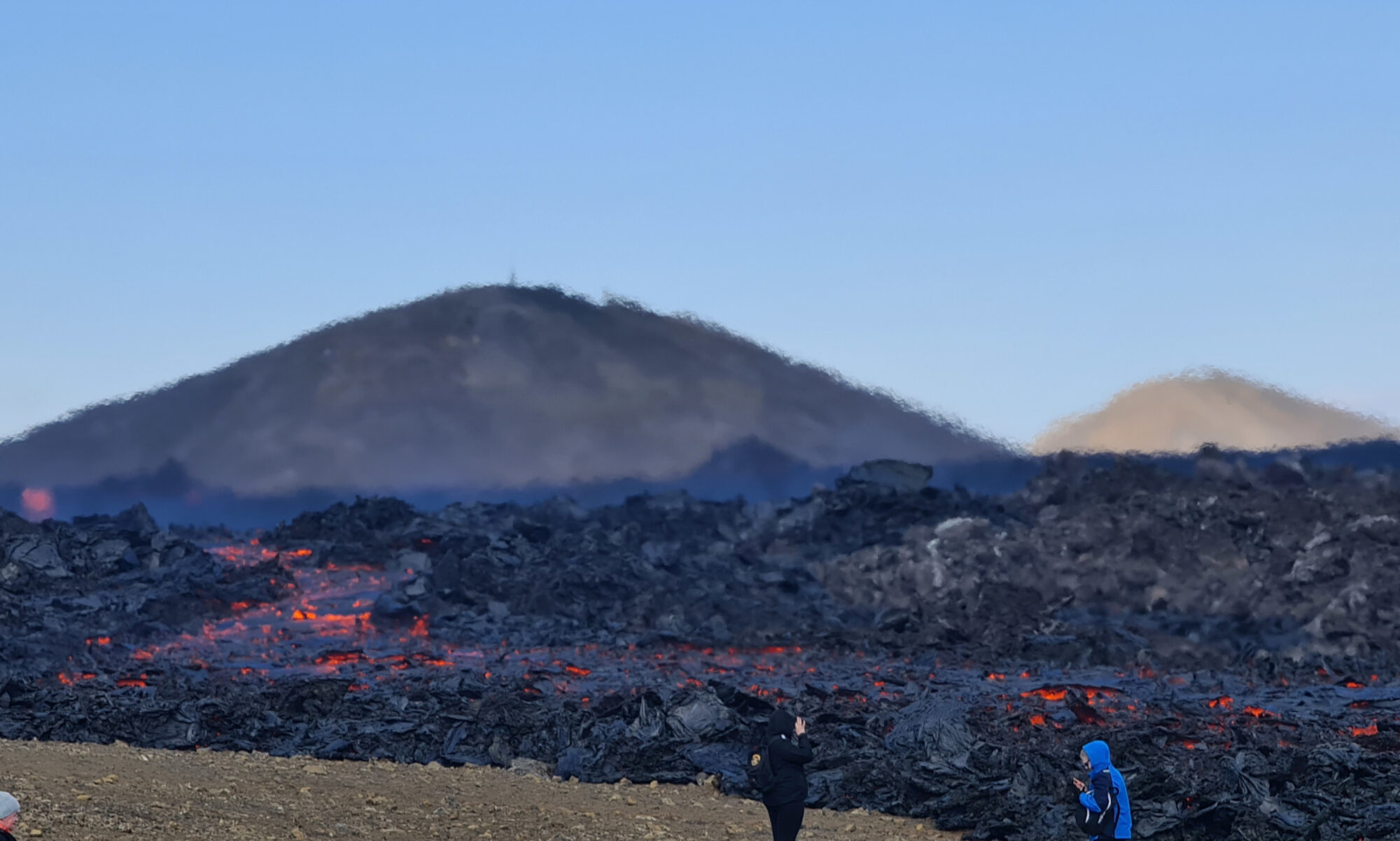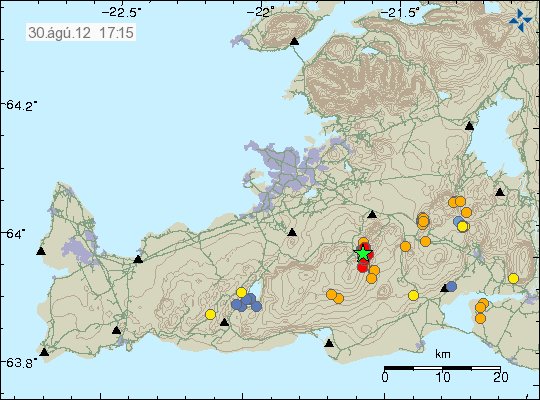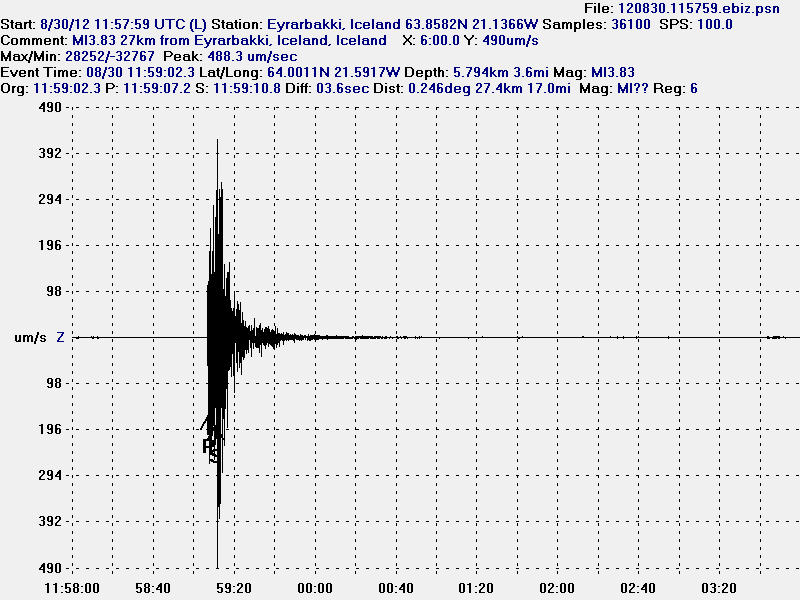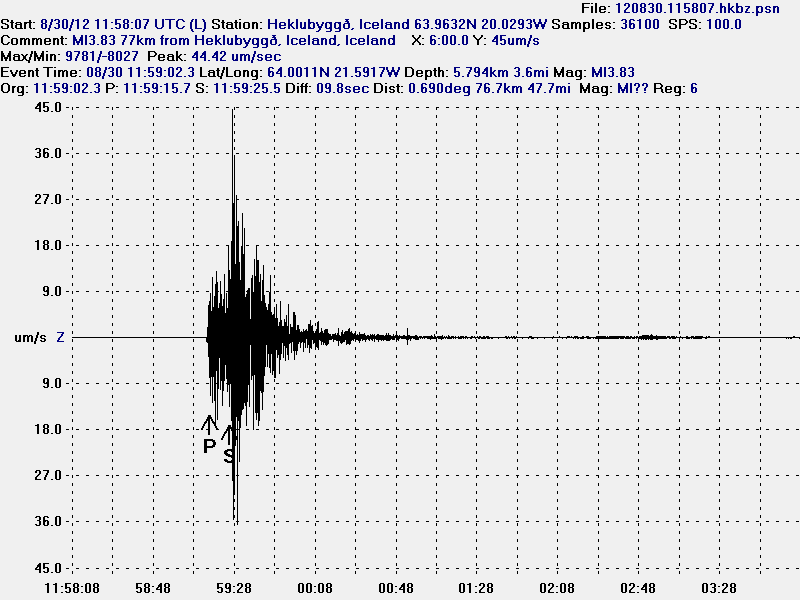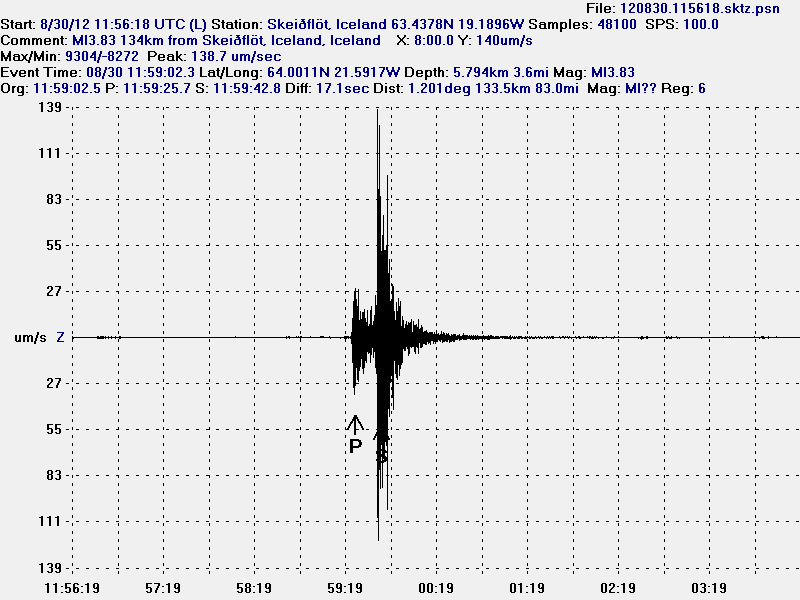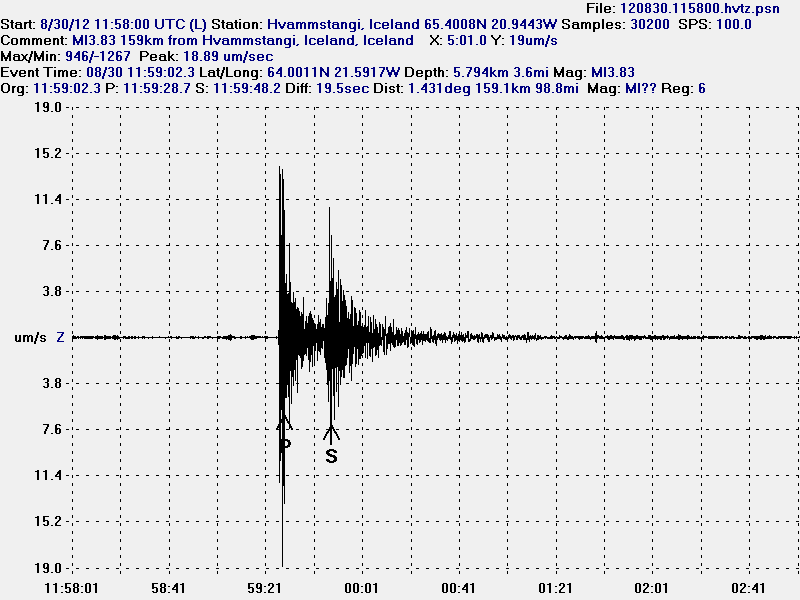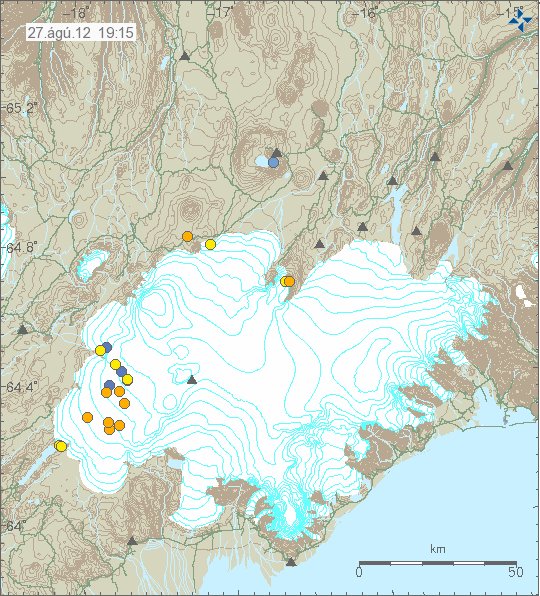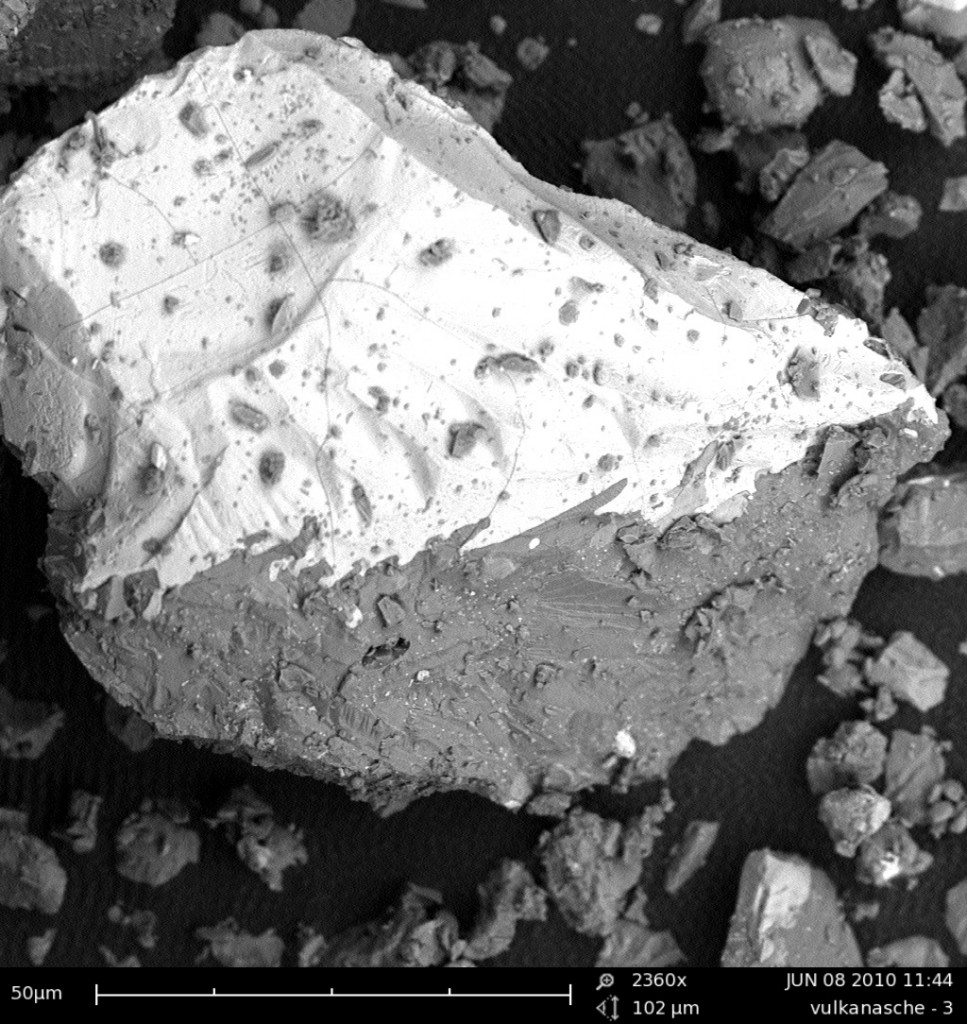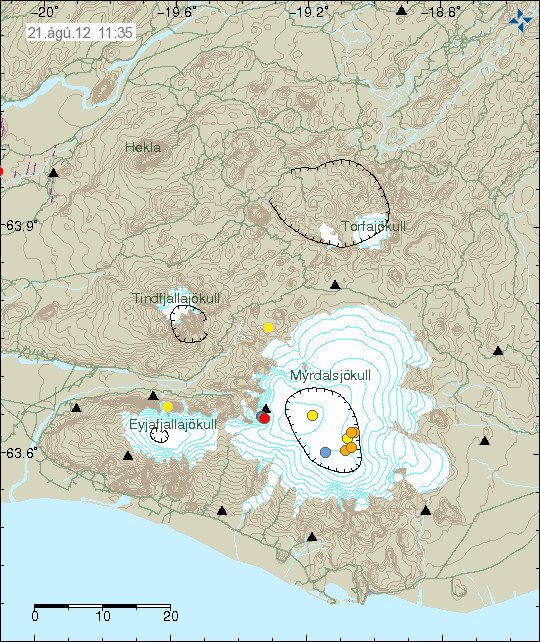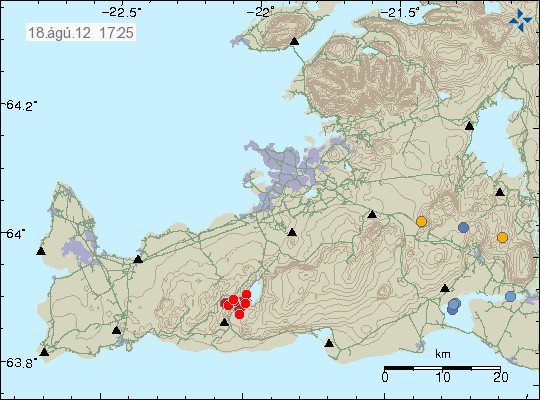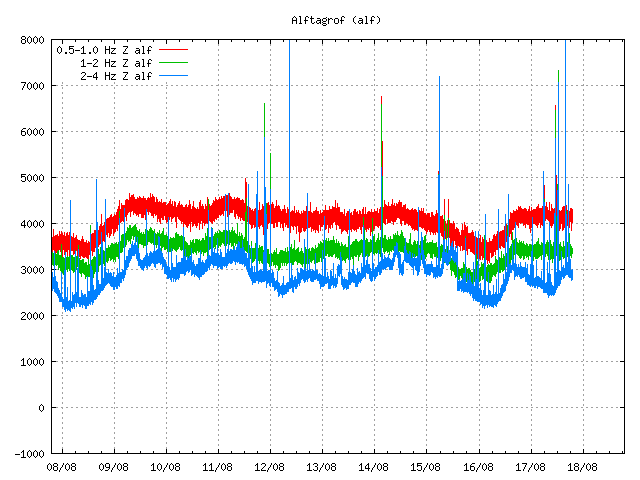Today (30.08.2012) an glacier flood was confirmed from the western Skaftárkatli cauldron. This glacier flood is small as expected. But it did take several days longer to appear from Vatnajökull glacier then expected. Some hydro-thermal activity in Hamarinn volcano (Bárðarbunga volcano) seems to be currently taking place at the moment. But some harmonic tremor spikes have been taking place in the past two hours.
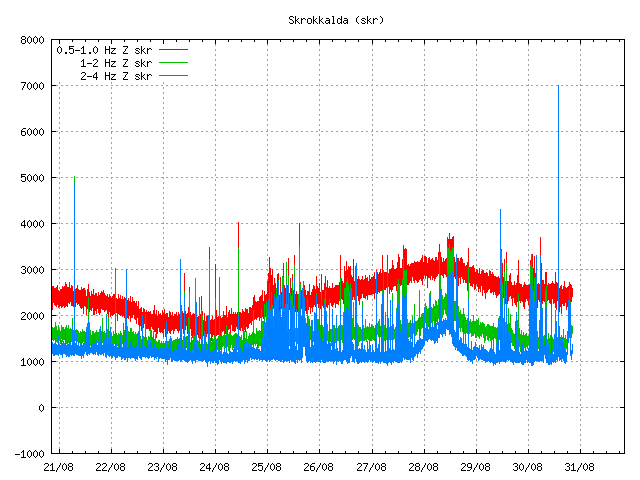
Harmonic tremor pulse can be seen at the end of this tremor plot from IMO. It only lasted for about 30 to 60 min. Copyright of this image belongs to Icelandic Meteorological Office.

Harmonic tremor pulse can be seen at the end of this tremor plot from IMO. It only lasted for about 30 to 60 min. Copyright of this image belongs to Icelandic Meteorological Office.
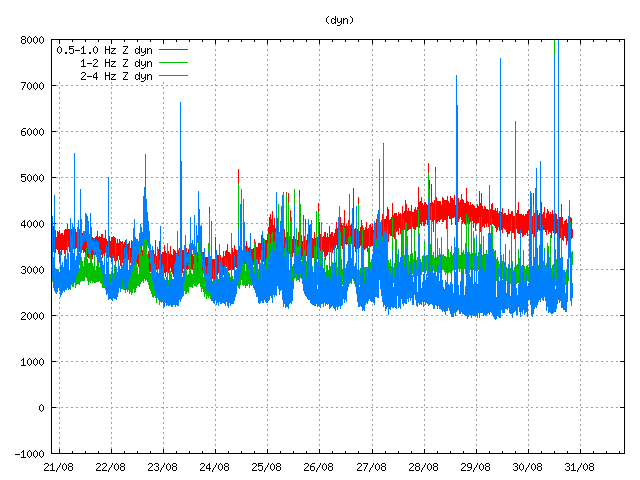
Harmonic tremor pulse can be seen at the end of this tremor plot from IMO. It only lasted for about 30 to 60 min. Copyright of this image belongs to Icelandic Meteorological Office.
It might be that this harmonic tremor signals are coming from other volcano system then Hamarinn volcano. This type of activity has been seen before in Hamarinn volcano and follows glacier floods from it. Given the activity last year. I cannot rule out volcano activity taking place now in Hamarinn volcano. New episode of harmonic tremor is now starting in Hamarinn volcano. Based on early observations . It seems that current activity is behaving in similar manner as did happen in July 2011 when an minor eruption took place in Hamarinn volcano. If that is the case now remains to be seen. But it should be clear in few hours what is exactly going on in Hamarinn volcano following this glacier flood.
Icelandic news about this glacier flood
Skaftárhlaup kom úr katlinum – myndband (Rúv.is, video)
Hlaupið kom úr vestari katlinum (mbl.is)
